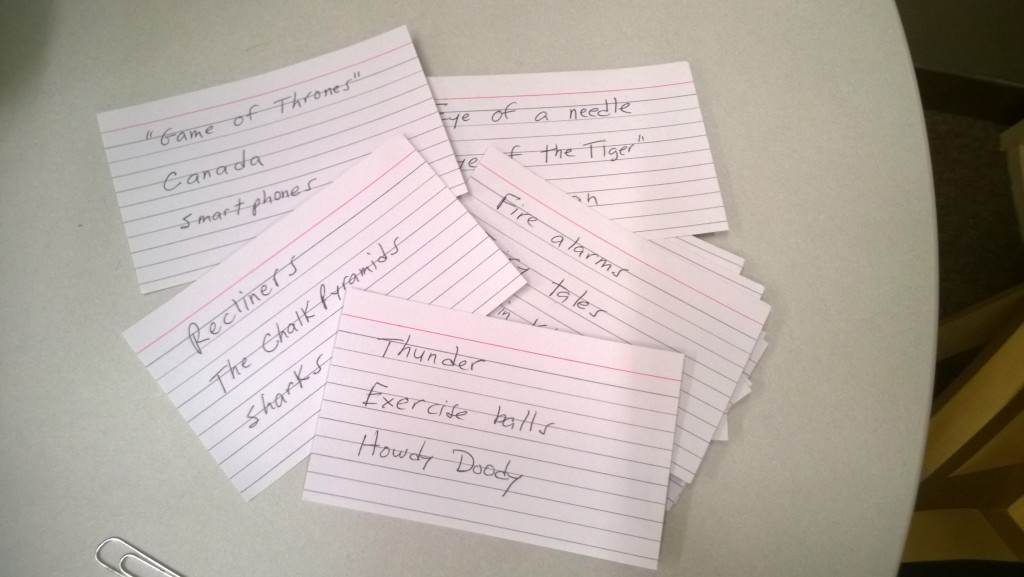The note cards I handed out to students in my hybrid class last week drew astonished looks.
Each contained a hand-written list of three things: events, people, animals, objects, locations, movies, songs, television shows. All were random, created one evening in a stream of consciousness. For instance:

“Eye of the Tiger”
Eye of a needle
Arctic Ocean
and
Fire alarms
Fairy tales
Calvin Klein
“Here’s the fun part,” I told students. “Find a connection among the three things.”
That’s where the astonishment came in.
The main goal of the exercise was to help students synthesize, to open their eyes to connections they might not otherwise see and to creative solutions they might not otherwise consider. They worked in pairs, and once they got beyond the initial “I can’t do this” shock, they generally came up with excellent answers.
After the exercise, one student asked a question that surprised me, even though it shouldn’t have.
“What’s the right answer?” she asked.
After wincing, I said there was no right answer to any of the postcard triads. Then I recited one of my educational mantras to all the students:
“There are no right answers in this class,” I said. “There are better answers. But there are no right answers.”
That’s a hard concept to grasp for students who focus far too much on a grade and a diploma rather than on learning. Ambiguity and uncertainty make them uncomfortable, and many have been taught that there are indeed right answers in their classes.
In some disciplines there are, of course, though even in those the understanding of the process is more important than any single answer.
I teach a class called Infomania, which is intended to help students become better researchers and to help them learn to solve problems with information and digital tools. I also try to help students work their way through ambiguity. Pushing them to find a link between fire alarms, fairy tales and Calvin Klein is part of that. So is working in groups, developing individual and group projects, and other approaches that emphasize active learning.
I thought about sharing some of the students’ creative responses to my nonsensical challenge but decided that wouldn’t be fair. You, dear reader, must work through that ambiguity on your own.
Remember, there are no right answers.
Tagged active learning, collaborative learning, flipped courses, hybrid learning, student engagement, student learning